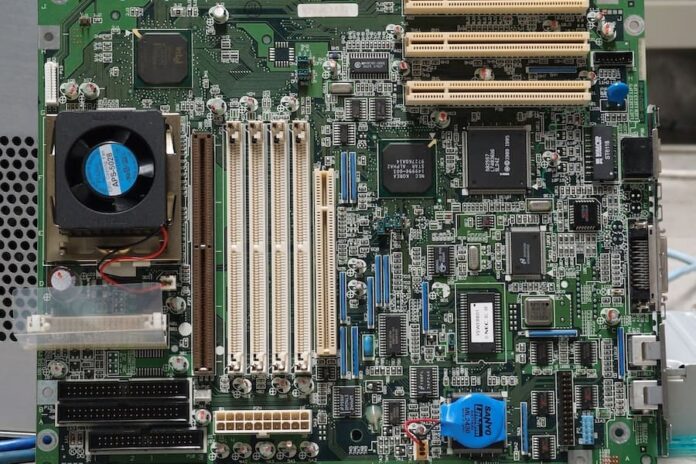CPU sockets are the unsung heroes of the computer hardware world, quietly connecting processors to motherboards and enabling the smooth operation of our digital devices. These essential components come in various shapes and sizes, each designed to accommodate specific types of processors. In this article, we delve into the world of CPU sockets, focusing on two of the most common types: LGA (Land Grid Array) and PGA (Pin Grid Array). Understanding these sockets is crucial for anyone building or upgrading a computer, as they determine the compatibility between processors and motherboards, ultimately shaping the performance and functionality of your PC. So, let’s explore the intricacies of these vital components and shed light on how they influence the heart of our computing devices.
What Are Two Common Types Of Cpu Sockets?
Two common types of CPU sockets are LGA (Land Grid Array) and PGA (Pin Grid Array). LGA sockets, commonly used by Intel processors, feature an array of flat contacts on the motherboard, while PGA sockets, favored by AMD processors, have an array of pins on the CPU itself. These socket types determine the physical connection between the CPU and the motherboard, so it’s essential to choose the right one to ensure compatibility when building or upgrading a computer. Each type has advantages and considerations, making it crucial to select the appropriate socket for your specific processor and motherboard combination.
The Role Of CPU Sockets In Computer Hardware
CPU sockets play a critical role in computer hardware as they serve as the interface between the central processing unit (CPU) and the motherboard. Their significance can be understood through the following essential functions:
Physical and Electrical Interface: At its core, a CPU socket is a physical interface that connects the CPU to the motherboard. Beyond providing a secure physical connection, it establishes the electrical connections necessary for seamless communication between the CPU and the motherboard’s chipset, memory, and peripheral devices. These electrical connections facilitate data exchange, instructions, and control signals.
Compatibility Determination: CPU sockets are not one-size-fits-all; instead, they are designed to be compatible with specific CPU models or families. Different CPU manufacturers, such as Intel and AMD, employ their socket designs, each with unique pin layouts or contact patterns. Ensuring that the CPU and motherboard share a compatible socket is paramount when constructing or upgrading a computer. A mismatch can result in the CPU being physically incompatible with the motherboard, rendering the system non-functional.
Thermal Management: Many CPU sockets incorporate mechanisms for attaching heat sinks and cooling solutions. Effective thermal management is vital for CPU performance and longevity. The heat generated during CPU operation must be dissipated efficiently to prevent overheating, which can lead to performance degradation or even permanent damage. The socket design often includes features like retention brackets, clips, or screw mounts to secure heatsinks and cooling fans in place.
Upgrade Path and Compatibility: CPU sockets significantly influence a computer’s upgrade path and potential for future enhancements. As CPU technology evolves, newer and more powerful processors become available. To take advantage of these improvements, users may need to upgrade their CPU. However, this often necessitates a motherboard with a compatible socket. Understanding socket compatibility is vital for future-proofing and extending the lifespan of a computer system.
Standardization and Industry Evolution: The technology industry relies on standardized CPU socket designs to ensure interoperability and longevity. These standards not only allow CPU manufacturers to create new processors that fit into existing motherboard designs but also enable motherboard manufacturers to design their products around established socket specifications. This standardization fosters innovation by providing a stable foundation upon which hardware advancements can be built.
Pros And Cons Of Pga Sockets
PGA (Pin Grid Array) sockets are one of the two joint CPU sockets, the other being LGA (Land Grid Array). PGA sockets have advantages and disadvantages, which should be considered when selecting a CPU and motherboard combination. Here are the pros and cons of PGA sockets:
Pros of PGA Sockets:
- PGA sockets offer a solid physical connection between the CPU and the motherboard due to the pins on the CPU itself. This robust connection reduces the risk of poor contact and ensures stability during operation.
- PGA sockets are generally more durable than LGA sockets. The pins on the CPU are less susceptible to damage or bending compared to the fragile contact points on an LGA socket.
- PGA sockets are often less expensive to manufacture than LGA sockets. This cost-effectiveness can lead to more affordable motherboards and CPUs for consumers.
- The pins on the CPU in a PGA socket can act as additional heat transfer points, potentially aiding in better heat dissipation when combined with an effective cooling solution.
- PGA sockets tend to maintain backward compatibility for a more extended period. Users can upgrade their CPUs without changing the motherboard as frequently, as manufacturers may release CPUs with the same PGA socket over several generations.
Cons Of Pga Sockets:
- Installing a CPU with a PGA socket can be more challenging than an LGA socket. Users need to be cautious not to bend or damage the delicate pins on the CPU, which can result in a non-functional CPU or motherboard.
- PGA sockets have a limited number of pins that can be accommodated, which can be a limitation for high-end CPUs with complex architectures that require more pins for connections.
- PGA sockets are bulkier compared to LGA sockets, which can make motherboards larger and potentially limit compact PC build options.
- Some CPU coolers and heat sinks designed for LGA sockets may need to be compatible with PGA sockets due to differences in the mounting mechanism.
- While PGA sockets are generally more durable, they can still be vulnerable to damage if the CPU is mishandled during installation or removal.
The Importance Of Matching CPU Sockets With Compatible Motherboards
Matching CPU sockets with compatible motherboards is paramount in computer hardware for several compelling reasons. This compatibility ensures the seamless functioning and reliability of the entire system. Here’s why it’s crucial:
Physical Compatibility:
CPU and motherboard socket slots are designed with specific layouts and pin configurations. A CPU will only fit into a motherboard socket that matches its socket type. Attempting to install a CPU in an incompatible socket can result in physical damage to both the CPU and the motherboard, rendering them useless.
Electrical Compatibility:
Even if a CPU physically fits into an incompatible socket, the electrical connections between the CPU and motherboard may not align correctly. This can lead to short circuits, damage to the CPU, motherboard, or both, and pose a fire hazard.
Optimal Performance:
Matching CPU sockets ensures that the CPU’s architecture and pin layout align with the motherboard’s capabilities. This compatibility is vital for achieving optimal performance. Mismatched sockets can lead to reduced performance or even system instability.
Feature Support:
CPUs and motherboards support various features and technologies, such as PCIe lanes, RAM compatibility, and integrated graphics. A mismatched CPU-motherboard combination might limit your ability to utilize these features to their full potential.
Upgradeability:
As technology advances, new CPUs with improved performance and features become available. Choosing a CPU and motherboard with compatible sockets allows for easier upgrades in the future. With socket compatibility, you may be able to replace both the CPU and motherboard when upgrading, which can be cost-prohibitive.
Warranty and Support:
Using a CPU in a compatible motherboard ensures that you can benefit from the warranty and support offered by the manufacturers. If you use components in an incompatible manner, it may void the warranty and leave you without recourse for technical support or replacements.
Longevity and Future-Proofing:
Ensuring socket compatibility can extend the lifespan of your system. Compatible motherboards often receive BIOS updates that enable support for new CPUs, providing a cost-effective way to keep your system up-to-date without a complete overhaul.
Troubleshooting and Maintenance:
If you encounter issues with your computer, having a compatible CPU-motherboard combination simplifies the troubleshooting process. Compatibility issues can be ruled out, allowing you to focus on other potential causes of problems.
Bottom Line
The bottom line is that matching CPU sockets with compatible motherboards is a fundamental consideration in computer hardware. It ensures the physical, electrical, and functional harmony between critical components, safeguarding against damage, optimizing performance, and facilitating future upgrades. It’s a cornerstone of building a reliable and efficient computer system, underscoring the importance of careful planning and informed decision-making in technology.
FAQ’s
Why is CPU socket compatibility important?
CPU socket compatibility is crucial because using a CPU with an incompatible socket can lead to physical damage, electrical issues, reduced performance, and system instability. It also affects your ability to upgrade or replace components in the future.
How can I determine the socket type of my CPU?
You can find the socket type of your CPU by checking its specifications on the manufacturer’s website or by examining the CPU itself. The socket type is usually mentioned in the product name or description.
Can I use an Intel CPU with an AMD motherboard or vice versa?
No, Intel CPUs are not compatible with AMD motherboards, and AMD CPUs are not compatible with Intel motherboards. They have different socket designs and electrical configurations.





